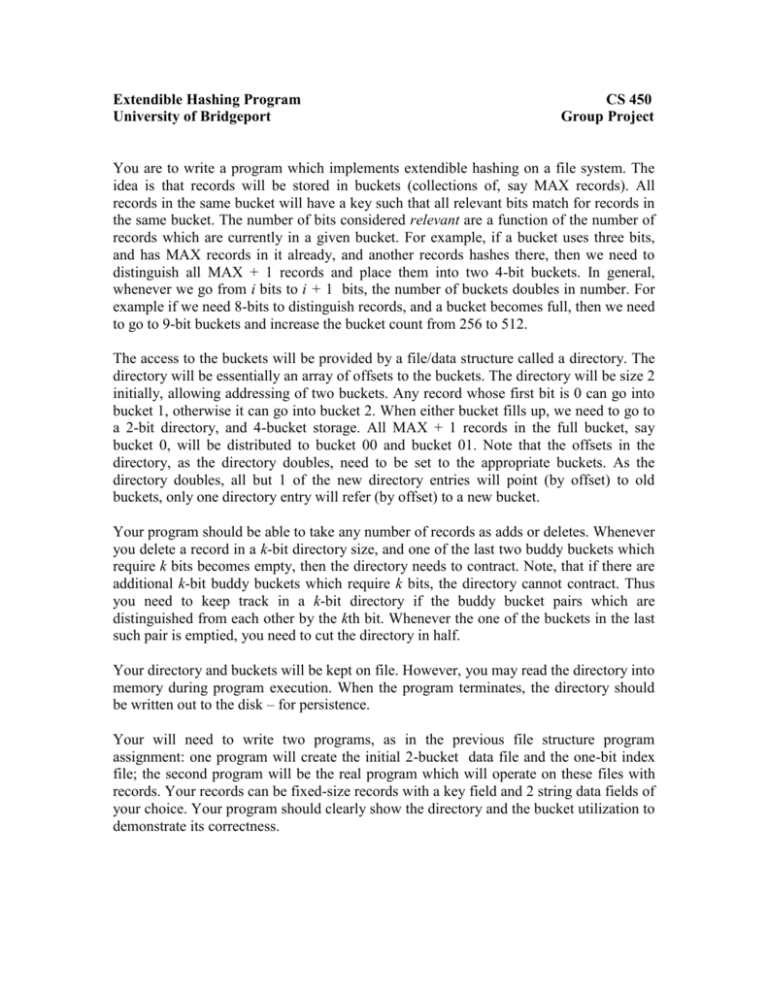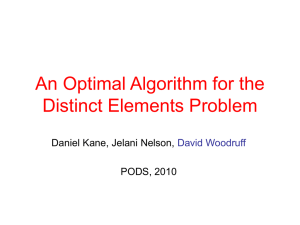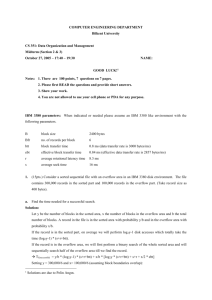Extendible Hashing Program
advertisement

Extendible Hashing Program University of Bridgeport CS 450 Group Project You are to write a program which implements extendible hashing on a file system. The idea is that records will be stored in buckets (collections of, say MAX records). All records in the same bucket will have a key such that all relevant bits match for records in the same bucket. The number of bits considered relevant are a function of the number of records which are currently in a given bucket. For example, if a bucket uses three bits, and has MAX records in it already, and another records hashes there, then we need to distinguish all MAX + 1 records and place them into two 4-bit buckets. In general, whenever we go from i bits to i + 1 bits, the number of buckets doubles in number. For example if we need 8-bits to distinguish records, and a bucket becomes full, then we need to go to 9-bit buckets and increase the bucket count from 256 to 512. The access to the buckets will be provided by a file/data structure called a directory. The directory will be essentially an array of offsets to the buckets. The directory will be size 2 initially, allowing addressing of two buckets. Any record whose first bit is 0 can go into bucket 1, otherwise it can go into bucket 2. When either bucket fills up, we need to go to a 2-bit directory, and 4-bucket storage. All MAX + 1 records in the full bucket, say bucket 0, will be distributed to bucket 00 and bucket 01. Note that the offsets in the directory, as the directory doubles, need to be set to the appropriate buckets. As the directory doubles, all but 1 of the new directory entries will point (by offset) to old buckets, only one directory entry will refer (by offset) to a new bucket. Your program should be able to take any number of records as adds or deletes. Whenever you delete a record in a k-bit directory size, and one of the last two buddy buckets which require k bits becomes empty, then the directory needs to contract. Note, that if there are additional k-bit buddy buckets which require k bits, the directory cannot contract. Thus you need to keep track in a k-bit directory if the buddy bucket pairs which are distinguished from each other by the kth bit. Whenever the one of the buckets in the last such pair is emptied, you need to cut the directory in half. Your directory and buckets will be kept on file. However, you may read the directory into memory during program execution. When the program terminates, the directory should be written out to the disk – for persistence. Your will need to write two programs, as in the previous file structure program assignment: one program will create the initial 2-bucket data file and the one-bit index file; the second program will be the real program which will operate on these files with records. Your records can be fixed-size records with a key field and 2 string data fields of your choice. Your program should clearly show the directory and the bucket utilization to demonstrate its correctness.









